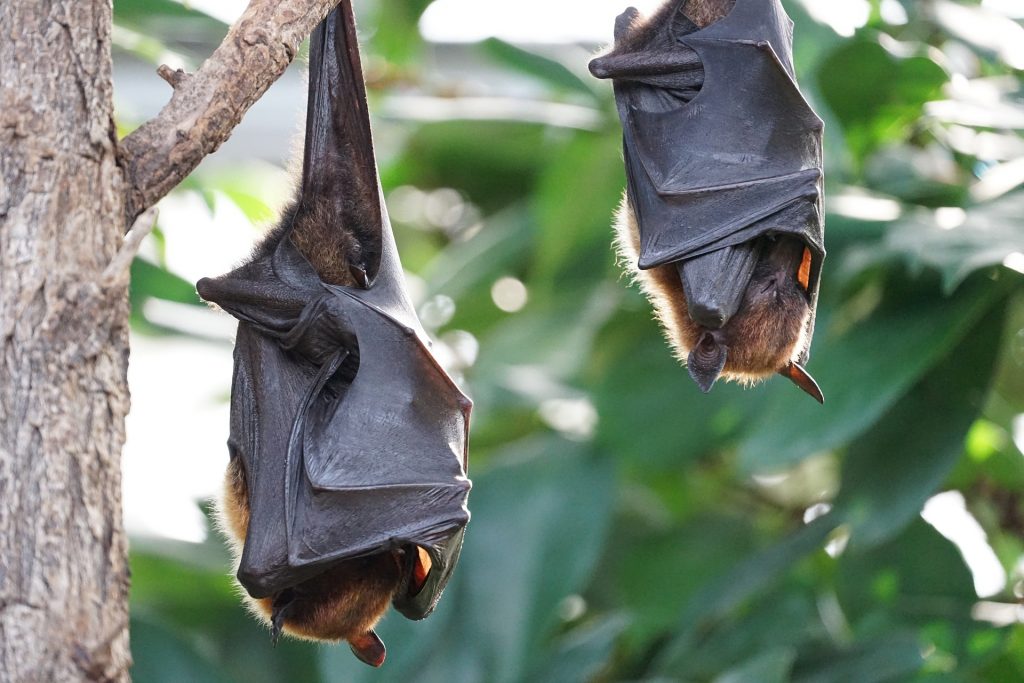BY LYLE T. GALLOWAY
The imagery of bats is plentiful this time of year, from classic horror movies to Halloween decorations, but the mammals themselves won’t be out for much longer. A local landfill is in need of some environmentally minded volunteers to make sure the bat population has a place to hibernate this winter.
Alliance Landfill, which stretches over the Ransom Township/Taylor border, is hosting “Bat Night” on Monday, Oct. 21. John Hambrose, Community Relations Coordinator at the landfill, recommends guests dress for the weather. The event will kick off with a guided tour of the landfill and short hike at 4:45 p.m. followed by a bat box building session at 6 p.m. Volunteers can assemble and paint bat boxes to hang around the landfill.
Hambrose hopes the event will help the local bat population thrive.
“Everybody knows that bats are under stress in the Northeast with climate change and diseases. … We’re trying to give them more places to live,” said Hambrose.
One of the biggest threats bats face is a fungal disease called white-nose syndrome.
According to Bat Conservation International, the disease has killed more than 5.7 million bats since it appeared in 2006, and the number is steadily growing. Bats usually hibernate in caves, which allows the disease to spread more rapidly between bats.
Hambrose hopes the shelters that volunteers build will improve the quality of life for the flying mammals.
The sight of bats, or even the mention of their name might send shivers down the spine of some people, but Hambrose says the stigma surrounding the little winged creatures is outdated.
“That’s all in the past, nobody’s really averse to bats anymore, they know their role in the environment,” says Hambrose.
For more information or to register for the event, call Hambrose at 570-871-6107 or email him at jhambros@wm.com.

If you go
- What: Bat Night
- When: Monday, Oct. 21, 4:45 p.m. (tour and hike) and 6 p.m. (bat box workshop)
- Where: Alliance Landfill, 398 S. Keyser Ave, Taylor
- Register/more info: Call 570-871-6107 or email jhambros@wm.com.
10 facts about bats
- The scientific name for bats is Chiroptera, which is Greek for “hand wing.”
- The largest urban colony of bats in the U.S. can be found underneath the Congress Ave. Bridge in Austin, Texas.
- The largest bat in the U.S. is the Greater Mastiff bat. It can grow as long as 7 inches with a wingspan of up to 23 inches.
- The largest bat in the world is the Large Flying Fox. Its body can reach up to a foot in length and its wingspan can reach up to 5 feet.
- Vampire bats aren’t native to America; the closest ones can be found in Mexico.
- Bats save farmers an estimated $22.9 billion every year on pesticides from the pests that they eat.
- There are more than 1,200 species of bats in the world.
- More than half the bat species in the U.S. are in severe decline or listed as endangered.
- Bats compete with each other for resources by jamming one another’s echolocation signals.
- When flying, the Mexican free-tailed bat can reach speeds of up to 100 miles per hour.
Bats in Pennsylvania
Pennsylvania bats range in size from the hoary bat (length, 5.1 to 5.9 inches; wingspread, 14.6 to 16.4 inches; weight, 0.88 to 1.58 ounces) to the tri-colored bat (length, 2.9 to 3.5 inches; wingspread, 8.1 to 10.1 inches; weight, 0.14 to 0.25 ounces). Nine species of bats regularly occur in Pennsylvania; six hibernate in Pennsylvania and three primarily migrate south for the winter. Two additional species, evening bats and Seminole bats, are rare visitors from the South.
- Little Brown Bat (Myotis lucifugus)
- Northern Long-Eared Bat (Myotis septentrionalis)
- Indiana Bat (Myotis sodalis)
- Small-Footed Bat (Myotis leibii)
- Silver-Haired Bat (Lasionycteris noctivagans)
- Tri-colored Bat (Perimyotis subflavus)
- Big Brown Bat (Eptesicus fuscus)
- Red Bat (Lasiurus borealis)
- Hoary Bat (Lasiurus cinereus)
— PENNSYLVANIA GAME COMMISSION




